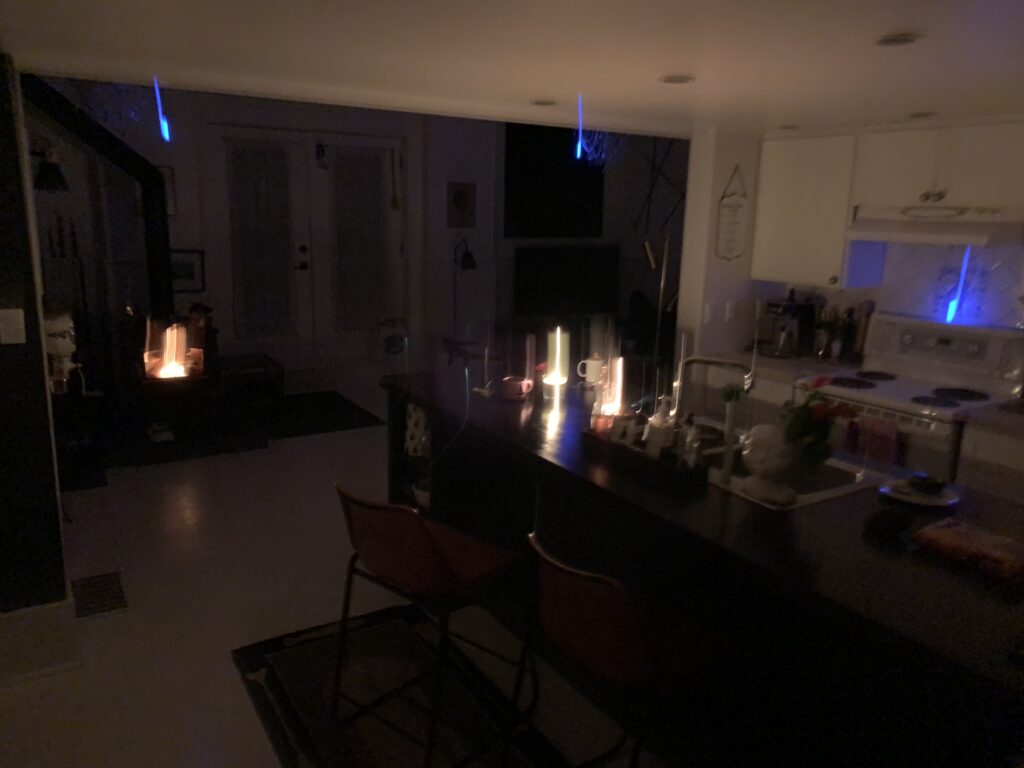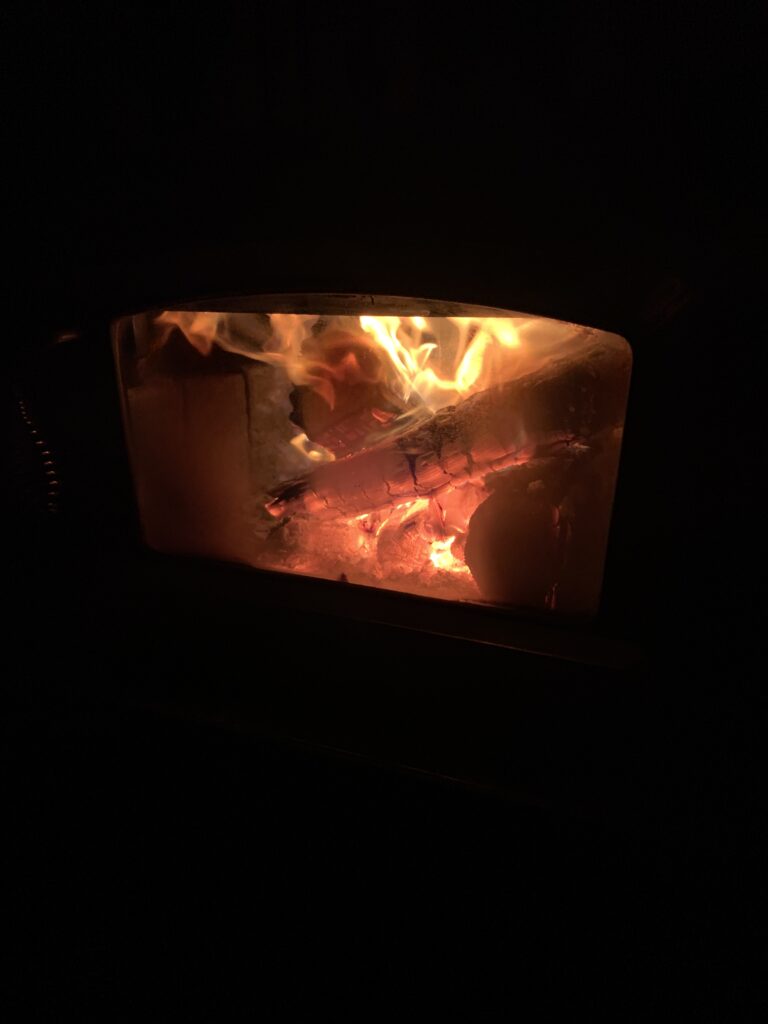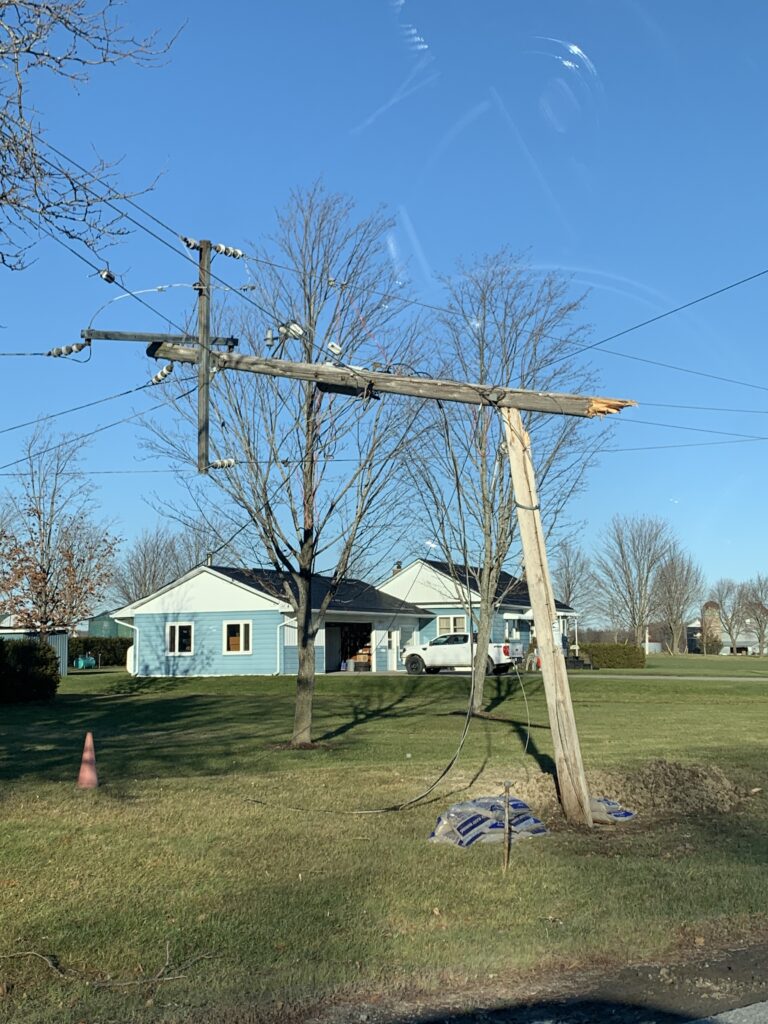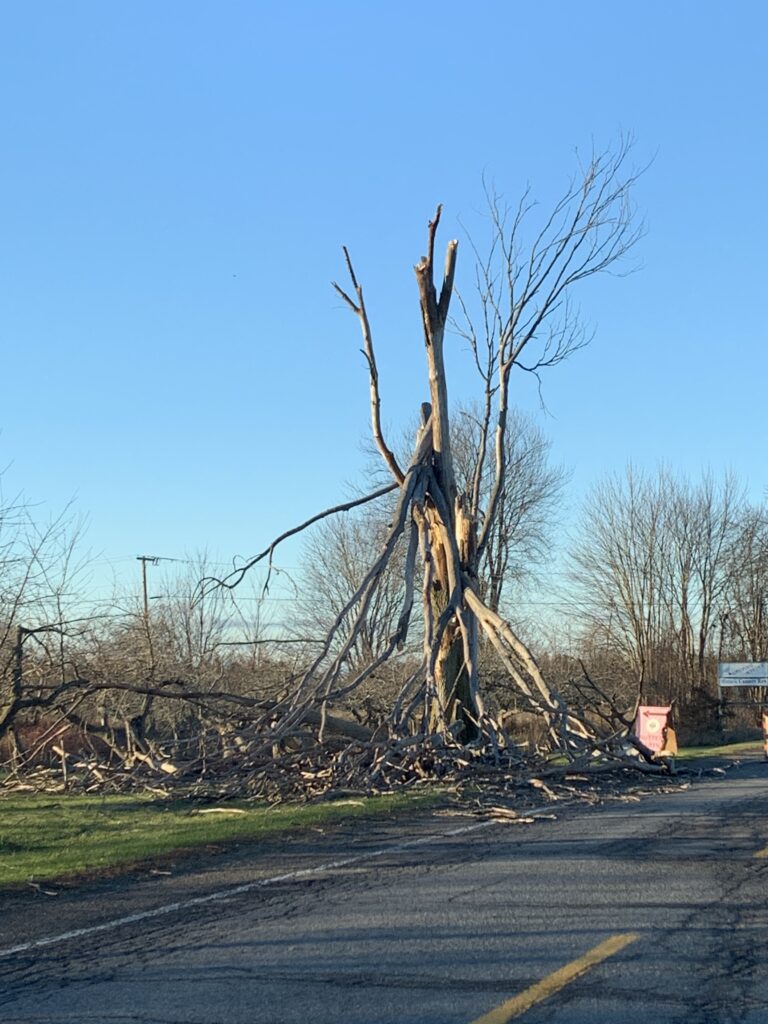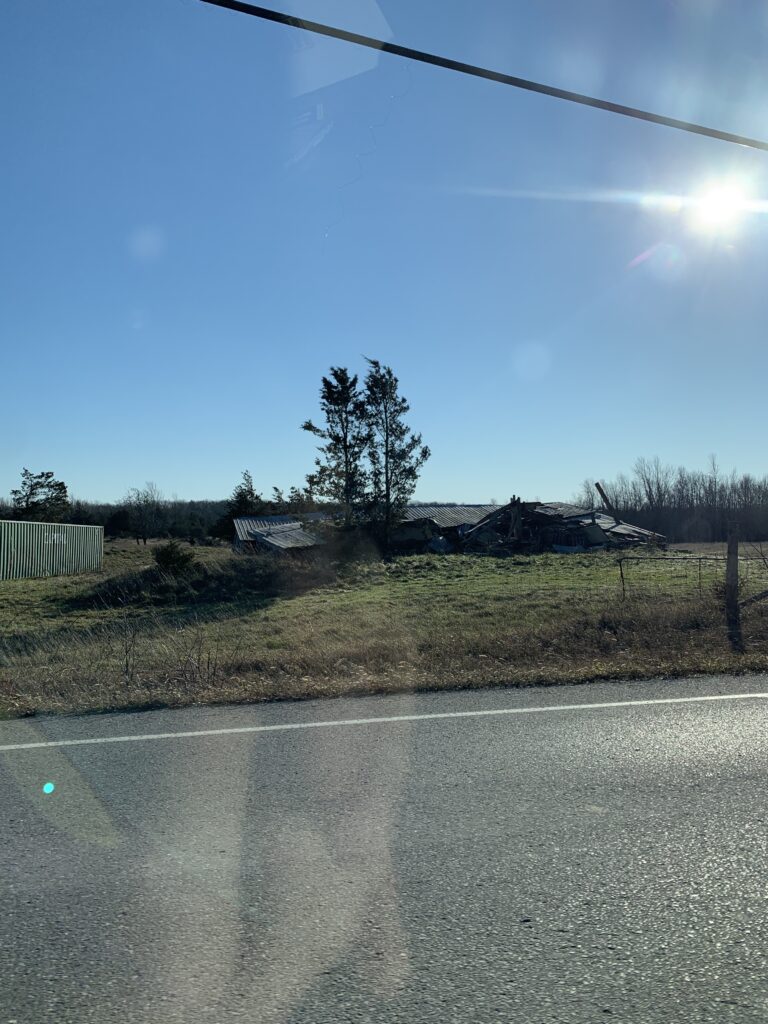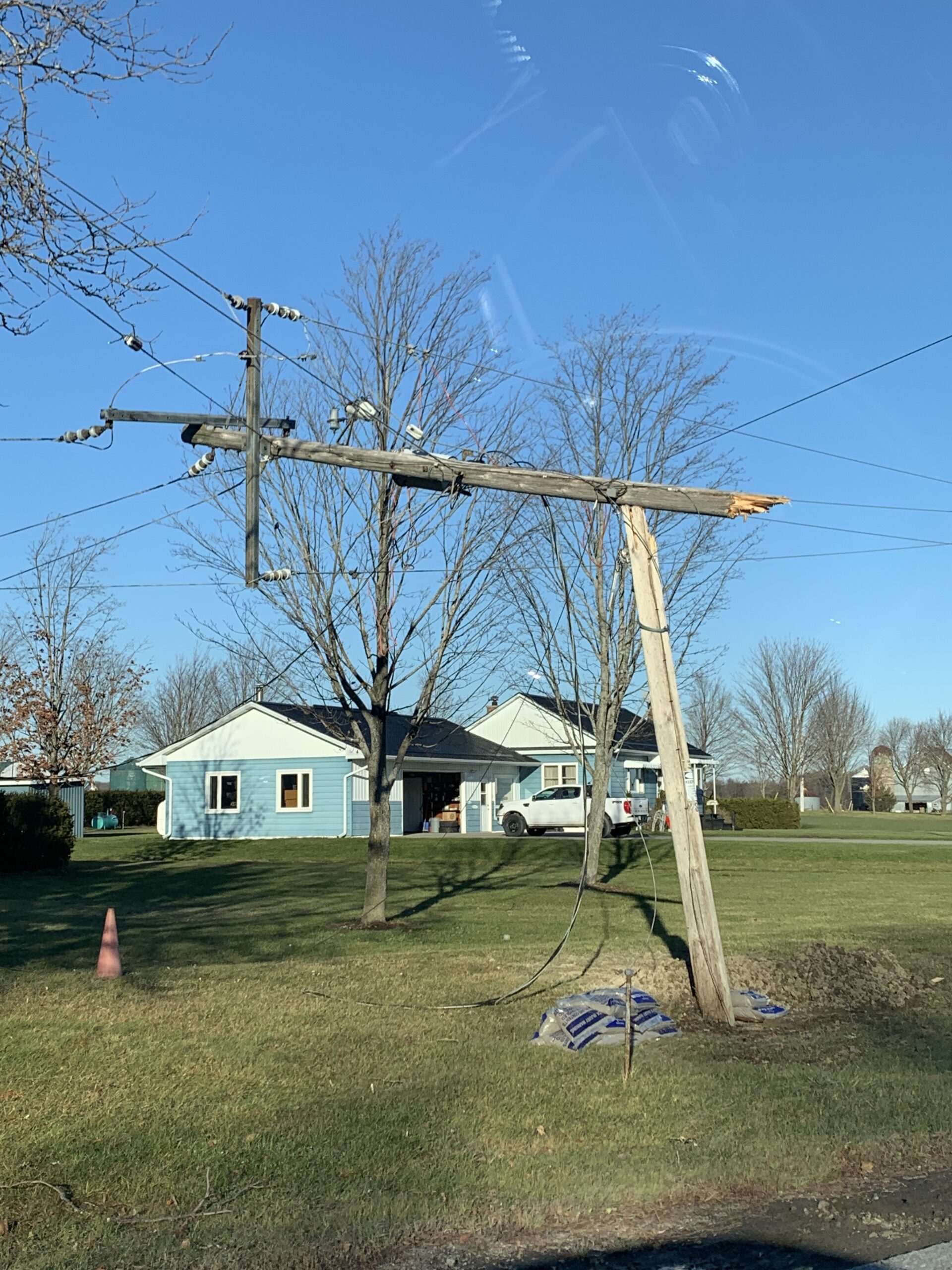
The other weekend I was out of town at an Undisclosed Location when a harsh late-Fall storm tore through the area. There were extreme weather warnings, due to high winds and lashing rain. This storm resulted in thousands of homes across Southern Ontario being without power. We were not spared. for a little over 36 hours, there was no power to the house. And during it all the wind howled and the rain hammered away.
Though I prep and plan and think about this stuff all the time, I do sometimes require a “gut check” to ensure I am in-line with realities and keep an open mind. I know enough to know that I don’t know enough, and thereby am constantly second-guessing and re-checking things, while looking to improve my methods.
I bring this mentality to these “learning opportunities”, as there is little danger in staying and seeing what happens. Thankfully, the worst that would have happened would have been that I’d have jumped back in the car and driven back home, albeit a bit disappointed in myself. That didn’t happen as we decided to tough it out and see how it went.
When the lights kicked out, first thing was to make everything safe and get some light going. I immediately went to the Emergency bag I keep and set out several glow sticks throughout the house as well as the LED headlamp I keep there. Adding those to a few candles gave enough light to see around and even do mostly everything we needed. As it was already dark outside, the light was essential to keep things safe.
My next concern was heat. I already had the wood stove going, so adding another log added some heat as well las much-appreciated light to the space.
We quickly realized though, that our biggest problem was water. The pump from the well went out with the power and, not having a generator on-hand made things a bit difficult. Only a few litres of bottled water to drink and what was in the toilet tanks and bowls to stay sanitary. This all came to issue quite quickly. Dishes in the dishwasher needing to wash, toilets needing to be used (and flushed), and a slight panic as to where the coffee was going come from in the morning (the danger is real).
Thankfully I had planned for some of these eventualities.
- I had several jugs of water stored in the pantry closet. Not enough for a week, but definitely enough to make coffee (and cook with), wash dishes and even refill toilet tanks.
- All my cookware is either clad stainless steel or cast iron, so I was able to use the top of the wood stove to boil water and/or cook if needed.
- I also stock 3 redundant methods to brew coffee without power (when the machine won’t work) – a Bialetti mokka maker, a french press and a pressure-activated camp espresso maker. Hot water was easily had from the wood stove so all was well.
By morning the power was still out. And with it some further issues: no internet. Though we all still had our phones, there was a concern about how long their batteries would last, especially with the increased use due to “boredom”. I could address this with the battery packs I had in my bag and was able to charge them all. The portable radio I had had somehow not been charged and was dead. Though not a big deal in this situation, I was a bit miffed that I had let that happen.
Likewise, as we slept the fire died down and the house got considerably colder. We had plenty of chopped firewood and I was able to get a roaring fire going again pretty quickly to warm things up. It’s a huge morale booster and well worth the investment if you’re able to incorporate it into your living space (either a wood stove or similar gas appliance).
In the light of day, I was able to assess the damage outside. We were lucky that our roof was good, but we lost a tree in the back. All-in-all, we were lucky. Our neighbours across the way weren’t. Their truck window got smashed by something and they lost several roof shingles and some siding. The other neighbour lost their barn. The wind completely destroyed it. They did, however, have a generator and had power, so after checking on one another we got back to the business of keeping on keeping on.
About early afternoon, my neighbours brought their generator over to our place and offered it to us for running our fridge to keep the food from spoiling. I joked that how funny it would be that by the time we set it up the power would come back. They brought it over in their tractor and we set it up, ran the cord inside and plugged in. As the motor sprang to life all the lights in the house went on. I thought it was weird because the only thing plugged in was the fridge. Yep, that’s exactly what happened – the power came back within seconds of the generator starting up.
We all had a laugh about it and repacked it and they left.
Everything returned to normal pretty quickly, but there were some lessons learned which I will need to incorporate into my set-up to tighten up my game:
- Have a more robust, reliable power replacement. I have a Goal Zero Yeti kit, but only just got it and haven’t even unpacked it. So I didn’t have it with me. That sucked. I’ll also be looking into a generator myself, but, as is with most things, these things can cost.
- Better networking with my neighbours. I don’t know them all that well but having a readily available hand to lend goes a long way in a time of need.
- I don’t own a chainsaw. One thing that would have been very helpful for the fallen tree would have bee na chainsaw or even a buck saw – neither of which I had on-site. Something to think about.
- Integration of a manual pump tied into the well system might be an option. Even with power out, if I could have pumped water, it’d have made it easier.
- Possibly setting up a UPC for the internet modem – it’d have kept our connectivity alive for a while at least.
Lastly, continuous review and reworking. There is no one-size-fits-all way to plan for this stuff.
Assess you situation. Take stock of your assets and liabilities. Identify what you need to implement. Use the principles of preparedness to address the deficiencies and begin taking steps to fix them.
In the end, a good dry run. Glad it all worked out and that I was able to identify gaps.
If you would like to learn more about principle-based preparedness, you can find our Preparedness Guide HERE.
Till next time, stay safe and #staycrafty!

